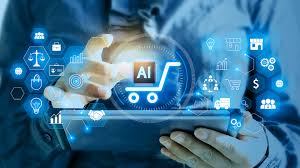
Introduction
Entrepreneurship has always been the driving force of economic growth, innovation, and job creation. But in the digital age, the way startups are built, funded, and scaled has transformed dramatically. The rise of digital platforms, cloud computing, artificial intelligence, social media, and global connectivity has lowered barriers to entry, giving entrepreneurs new tools to reach markets faster and more effectively than ever before.
At the same time, this new era comes with significant challenges. Competition is global, consumer expectations are constantly evolving, and startups must navigate issues such as data privacy, cybersecurity, and rapid technological change. Success in the digital age requires not just creativity and vision but also agility, resilience, and the ability to adapt quickly.
This article explores the opportunities and obstacles facing entrepreneurs in today’s digital-driven economy, while highlighting real-world examples and strategies that can help startups succeed.
The Digital Revolution and Its Impact on Entrepreneurship
The digital revolution has reshaped the entrepreneurial landscape in three key ways:
Lower Barriers to Entry
Before the internet era, launching a business often required heavy upfront investment. Today, a startup can be created with little capital using digital tools like Shopify, WordPress, or Amazon Marketplace. Cloud computing allows businesses to scale without huge infrastructure costs.
Global Reach
Digital platforms enable startups to access international markets instantly. For example, small businesses can sell globally via e-commerce websites or reach millions through social media campaigns.
Access to Knowledge and Resources
Online courses, communities, and mentorship platforms have made entrepreneurial education more accessible. Startups no longer depend solely on local ecosystems; they can tap into global expertise.
This shift has democratized entrepreneurship, allowing individuals with innovative ideas to compete with established corporations. However, while opportunities have expanded, so have the complexities.
Opportunities for Startups in the Digital Age
The digital landscape presents unprecedented opportunities for new ventures:
E-Commerce and Online Marketplaces
Platforms like Amazon, Etsy, and eBay allow entrepreneurs to set up businesses quickly with minimal investment. Even niche products can find a market thanks to digital targeting and online advertising.
Social Media and Digital Marketing
Entrepreneurs now have direct channels to build brand awareness, engage with customers, and create communities. A viral campaign can bring overnight success to a small business.
Example: Dollar Shave Club gained massive popularity through a single viral video, later being acquired by Unilever for $1 billion.
Remote Work and Virtual Teams
The rise of collaboration tools (Zoom, Slack, Trello) allows startups to hire global talent without geographic restrictions. This flexibility reduces costs and improves scalability.
Access to Alternative Funding
Crowdfunding platforms like Kickstarter and Indiegogo, along with venture capital networks, give startups diverse funding options. Entrepreneurs no longer rely solely on traditional banks.
Emerging Technologies
Startups can leverage AI, blockchain, Internet of Things (IoT), and augmented reality to build innovative products and services. For instance, fintech startups use blockchain to disrupt traditional banking, while AI-powered apps personalize user experiences.
These opportunities create fertile ground for ambitious entrepreneurs, but they also intensify competition. For every successful digital startup, countless others struggle to survive.

